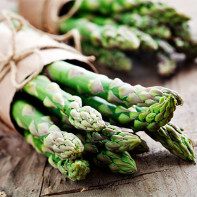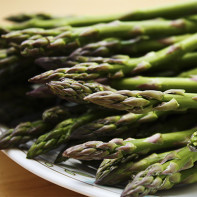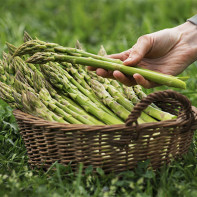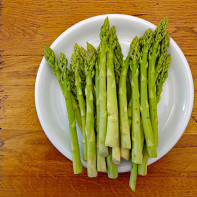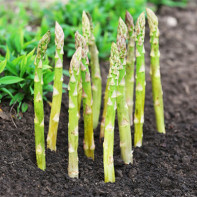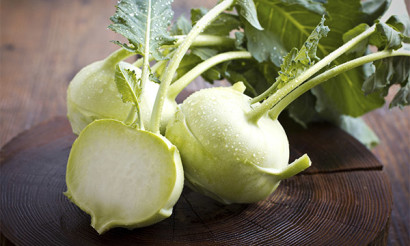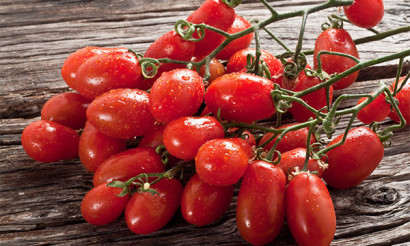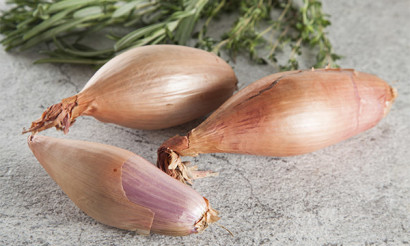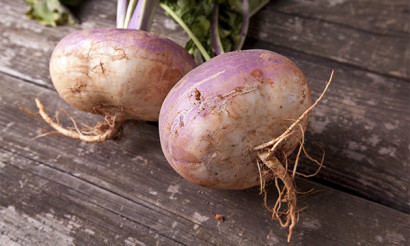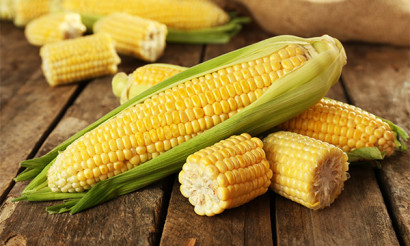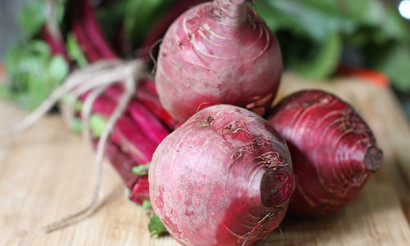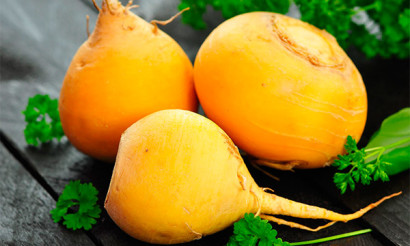Asparagus: what is this plant, useful properties, how to cook it
Asparagus is considered one of the most useful, tasty and expensive vegetable crops. There are more than 200 different species of this plant, with only a small fraction of them in demand. The vegetable is simply an invaluable product for humans, as it contains a lot of useful substances.
- What is asparagus and what it looks like
- Types
- What is the difference between asparagus and string beans
- Composition and calories
- Useful properties of asparagus
- General benefits
- For Women
- For Men
- In Pregnancy
- For breastfeeding
- For children
- When losing weight
- The benefits and harms of pickled asparagus
- Soy asparagus: health benefits and harms
- Asparagus in medicine
- Diabetes
- For pancreatitis
- Gastritis
- In constipation
- In gout
- Asparagus-based folk medicine recipes
- For arthritis and rheumatism
- In problems of the musculoskeletal system
- Antipyretic and diuretic
- Infusion to enhance potency
- Remedy for periodontitis
- Asparagus in cosmetology
- Mask for pigment spots
- Eye Wrinkle Mask
- Harms and Contraindications
- How to Choose and Store Asparagus
- Can I Freeze?
- How to Eat Asparagus Properly
- How much can I eat per day?
- Bedtime Allowance
- Can I Eat Raw Asparagus?
- Can I Eat Asparagus during Lent?
- How to Properly Clean Asparagus
- How to cook asparagus: Recipes
- How to Boil
- How to Roast
- How to Pickle
- Asparagus salad
- Asparagus in the oven
- Asparagus Soup
- Can I Give Animals Asparagus
- Interesting facts about asparagus
What is asparagus and what does it look like?
Asparagus is a plant belonging to the asparagus family. Places of cultivation - almost the entire territory of the European continent, North African countries and western Asia. It has been known to humans since ancient times. It was actively used in medicine as a diuretic and purifier. Later asparagus began to be referred to as an aphrodisiac and was used for problems with potency. At one point, monks were forbidden to use it for the same reason.
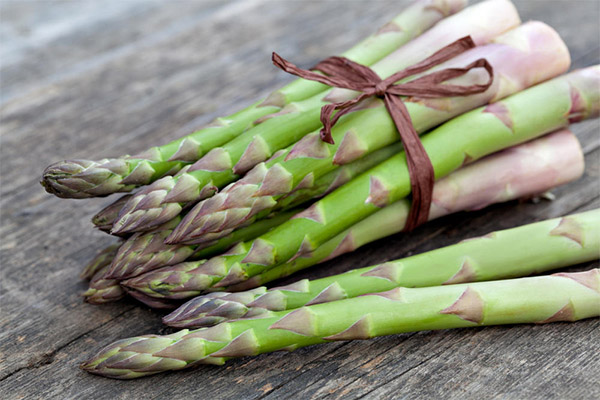
Today, the vegetable is actively used in the culinary field. The most valuable are the young asparagus shoots that have just emerged from the ground. Once the leaf buds open and the shoots thicken, they are no longer edible.
It is also used for decorative purposes, such as decorating flower bouquets. Asparagus is a perennial bipartite plant that can be grown in the garden, but you will need a fairly large area to achieve acceptable results. Reaching the peak of fruiting, the plant can bring an average of about 10 shoots per season. Today, the most popular are male open-pollinated hybrids of the first generation, which have a higher yield, while not producing seeds and not populating themselves.
Types
- Soybean. Derived from processed soybeans. The beans are soaked, after which they increase in size up to 2 times, then ground to a homogeneous consistency. The resulting mass is pressed and the liquid part, the soy milk, is separated. During the boiling process, a foam emerges, which is collected and dried. This is the finished product. In addition to the original taste and aroma, this asparagus boasts a number of health benefits.
- White asparagus. This type of asparagus is very popular on the European continent. The period of ripening is March-June. The white color of the product is due to the lack of interaction of the plant with the light during growth, and the relatively high cost - labor costs in care and cultivation. The difficulty of cultivating this species can be compared to artichokes and truffles. This variety of vegetable in terms of taste is inferior to other species, but the wide range of useful substances present in the product fills this gap.
- Green. It is also sometimes called medicinal. It is considered the most widespread variety and grows extensively on seashores. For a long time, this variety was not quite acceptable for consumption, especially in aristocratic circles. But then it turned out that this asparagus has a wide range of useful substances.
- Purple. A rare species, grown in dark conditions, with brief sessions of sunlight exposure. This results in red and blue pigmentation on the plant itself. The vegetable has a more bitter taste than the other species. Asparagus can change its hue from purple to green when exposed to temperature.
- Bean. It is also called asparagus bean. This variety is very popular, the beans have yellow, red even multicolored color. As a rule, immature beans are used in cooking. Asparagus is always cooked before being eaten. Asparagus can be included in diet menus. It is rich in easily digestible proteins that are similar in amino acids to those of meat and fish.
- Asparagus. Although asparagus looks like an underwater plant, it is not an algae. Its habitat is seashores and salt marshes. The taste is brackish and slightly iodine-tinged, but the product can change its flavor characteristics depending on cooking conditions. It is consumed both processed and natural.
The difference between asparagus and string beans
Asparagus string beans have curly stems, but they can also be straight and branchy, with few hairs on them. Asparagus has fairly branched stems, with twigs in bunches and in the axils. The first crop has trifoliate, paired pinnate leaves with long petioles. The second crop has underdeveloped, small, scaly or spiky leaves at the base that have hard spurs.
Beans have an average of 3-5 flowers on long pedicels, they are dark purple and purple in color. Asparagus has rather small florets, usually located in the axils of the leaves, solitary in cystic or shield-shaped inflorescences.
Composition and calories
100 grams of the product contains:
- calories - 21 kcal;
- proteins - 1,9 g;
- fats - 0,1 g;
- carbohydrates - 3,1 g.
The vegetable contains vitamins A, B1, B2, B5, B6, C, E, H and PP. The product is also rich in minerals - potassium, calcium, zinc, sodium and folic acid. In addition, it contains fiber, which normalizes the function of the gastrointestinal tract, and asparagine, a substance that supports heart function.
Useful properties of asparagus

General benefits
- Helps fight cancer. Studies have shown that the vegetable can be used as a remedy to ease the symptoms of cancer. The saponins in the product have beneficial effects on the body because they can induce the death of cancer cells. In addition, they inhibit further growth and spread of harmful cells. Another compound, sulforaphane, has chemopreventive properties. Folate reduces the risk of pancreatic, colorectal, and esophageal cancers.
- Improves urinary tract health. Urinary tract health is determined by the health of the bladder, kidneys, and urethra, and asparagus can help support these organs. Because of its antibacterial properties, the green vegetable suppresses the growth of bacteria that can potentially cause various infections. The vegetable can be used as a natural diuretic. Asparagus' diuretic properties help flush waste from the kidneys and prevent stone formation.
- It fights inflammation. Asparagus has antioxidant properties, so it is a great product to fight inflammation. It contains substances that reduce inflammation, especially those related to heart disease. Studies have shown that the anti-inflammatory properties of this product can relieve headaches, back pain, rheumatism and gout.
- Useful during menstruation. During menstruation, women may feel sluggish and general fatigue. At this time, the body needs replenishment of useful substances, including B vitamins, of which asparagus is abundant. Asparagus can also be used as a remedy for menstrual disorders. Once in the body, it helps it produce estrogen and relieves the symptoms of menopause.
- It supports the health of the skin and hair. Asparagus can be used as a cosmetic skin cleanser. It can help get rid of acne and improve skin tone. Vitamin C in the vegetable has a nourishing effect on the skin and prevents dryness, and folate improves hair health.
- It strengthens the heart. The vitamin K in asparagus prevents hardening of the arteries and keeps calcium in their lining. The vegetable can also help lower blood pressure. Soluble fiber reduces the risk of heart disease. Regular consumption of fiber can also have an effect on lowering blood pressure and cholesterol levels. The plant contains thiamine, which regulates homocysteine levels in the blood. Excess homocysteine increases the risk of heart disease. Phytocomponents and ascorbic acid help remove excess cholesterol from the blood and improve heart health, and folate prevents heart disease.
- Supports brain health. Asparagus is an excellent source of vitamins E and C. These two nutrients create a powerful combination that helps reduce the risk of Alzheimer's disease. The vegetable helps prevent cognitive impairment and decline, especially in the elderly. It can also be used to relieve depression. Folic acid improves mood and helps to cope with irritability, so the product can be consumed by people with epilepsy and seizures.
- Helps with digestion. The fiber found in asparagus aids in digestion by helping the movement of food in the intestines. Inulin is a substance that is directly responsible for improving digestive processes. In addition, the product is rich in water, which in turn helps prevent constipation and improves the health of the digestive tract. The prebiotic properties of the vegetable support the functioning of beneficial bacteria in the intestines, thus creating a balance between the microorganisms living there. Asparagus can be used for bloating or to get rid of excess water in the body.
- It improves bone health. Very often, low levels of vitamin K in the body weaken bone tissue, which can lead to fractures. Asparagus is abundant in this nutrient - one cup of the vegetable contains about half the daily allowance of vitamin K. It significantly affects calcium absorption and also prevents calcium from being washed out of the body, which ultimately contributes to bone health and reduces the risk of various diseases, such as osteoporosis. Vitamin K regulates bone mineralization and helps maintain bone density. Iron also supports bone health by strengthening bones and joints.
- Supports immunity. Glutathione, found in asparagus, is a detoxifier that helps destroy carcinogens. This compound is essential for proper immune function. Prebiotics help support the immune system and fight colds. The vegetable is rich in antioxidants that strengthen the immune system.
- Regulates sugar levels. Asparagus is a food that regulates blood sugar levels. The vegetable helps increase the production of insulin, a hormone that helps the body absorb glucose. The product also increases glucose uptake by the body's muscles and tissues, which helps to lower sugar levels and alleviate symptoms of diabetes.
- Supports visual health. Vitamin A, which is rich in asparagus, does an excellent job of maintaining eye health. This vitamin helps the retina interact with light and improves eye health. The antioxidant properties of the product help prevent vision problems, such as fighting yellow spot degeneration. Asparagus is rich in vitamin E and two antioxidants, lutein and zeaxanthin. Vitamin E improves vision, while lutein and zeaxanthin protect the eyes from cataracts.
- It alleviates hangovers. Asparagus can mitigate the effects of cellular toxicity to which alcohol consumption leads. The substances in the vegetable help quickly suppress the effects of alcohol on the body, thereby reducing the unpleasant effects in the morning. Asparagus makes up for the loss of minerals and amino acids due to alcohol ingestion, preventing headaches. The amino acids present in the product also protect the liver from harmful toxins, reducing the unpleasant effects of a hangover.
For women
Asparagus is useful for women because of its anti-inflammatory and antioxidant properties. The vegetable promotes the production of estrogen, so it is useful in combating the symptoms of menopause. It replenishes estrogen levels and supports the body in case of complete or partial hysterectomy. The plant also stimulates the growth of beneficial bacteria in the intestines, soothing the stomach and aiding digestion. The anti-aging properties of asparagus help increase the production of glutathione, an anti-inflammatory nutrient that can slow down collagen-degrading enzymes that cause wrinkles.
Asparagus extracts can be used to whiten skin. The vegetable also helps alleviate PMS symptoms and increases fertility by nourishing and strengthening the female reproductive organs.
For men
Asparagus is also useful for the male population. This vegetable has a significant effect on potency, libido, helps to increase hormone levels. It is worth mentioning that this plant has a long history of use as an aphrodisiac. Since ancient times, folk healers recommended asparagus to improve libido. There is evidence that the ancient Egyptians, Greeks and Romans used this vegetable for this purpose. In Indian Ayurvedic medicine, asparagus is considered an excellent remedy for increasing potency. It is rich in vitamin E, a nutrient that increases the flow of blood and oxygen to the pelvic area. Increased blood flow to the genitals leads to a good erection.
In addition to sexual desire, blood flow in the pelvic area is one of the most important factors that relate to sexual functioning. Without normal blood flow, a man will not be able to get the desired erection. Vitamin E also plays an important role in the production of sex hormones, which influence sexual desire. Asparagus helps in the production of histamine, an organic compound that is released during orgasm.
It also contains important minerals such as manganese, zinc, and selenium that affect sexual function. Deficiencies in these minerals can lead to decreased libido and poor sperm production. In addition, zinc increases libido, promotes the production of sperm cells and testosterone, the hormone that is responsible for sexual functioning in men. Asparagus also contains significant amounts of vitamin B6, a nutrient that is widely known for its properties.
In Pregnancy
During pregnancy, women may develop cravings for completely different foods, including some that they didn't even pay attention to before. If the number of these products included asparagus, it is first necessary to analyze the usefulness of this product specifically during pregnancy. It is worth saying right away that asparagus is useful, but only if you consume it in moderate quantities. The vegetable is rich in minerals and vitamins.
It is worth noting that asparagus in its raw form is not recommended for women in the position. Before consumption, the product needs to be thoroughly cleaned and properly processed, it is necessary to get rid of harmful microbes that may be contained in it. Only in this case, asparagus will have a beneficial effect on the woman's body and her fetus. In just 100 grams of cooked asparagus, there is more than 50% of the daily allowance of folic acid. Folic acid helps to reduce the risk of neural tube defects, and also minimizes the likelihood of pre-eclampsia.
Calcium in the vegetable strengthens the fetal bone system, lowers blood pressure and prevents preeclampsia in the mother. Vitamin C helps in the production of collagen and also strengthens the fetal immune system. Vitamin B6 balances glucose levels and aids in the development of the baby's nervous system and brain.
Pregnant women are advised to eat asparagus roasted or in salads. Asparagus can also be steamed, boiled, and baked.
There are some incorrect opinions about this product. Some believe that asparagus can affect the pregnancy test, showing a false positive result. In fact, this is not true.
It is necessary to focus on the harms and contraindications of asparagus. It contains substances that can provoke excessive gas, especially in cases of digestive disorders. Women who are allergic to onions, leeks and garlic should avoid eating this product. It is advisable to consult a doctor about the potential risks of including asparagus in your diet before starting to consume it.
When breastfeeding
Asparagus can be eaten as a food while breastfeeding. The vegetable is a good source of fiber, vitamins A, C, E, and K, chromium, and folate, substances that combine well with vitamin B12 found in fish, poultry, meat, and dairy products. The combination of folic acid and vitamin B12 acts as a brain enhancer, helping to prevent cognitive impairment. The product also contains tryptophan, an essential amino acid that stimulates prolactin, the hormone that produces milk.
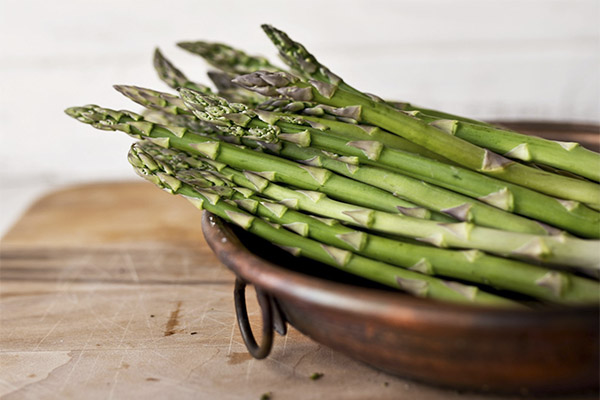
However, it is worth remembering that asparagus is also sometimes used as a medicine. But during the period of breastfeeding it is extremely dangerous to use it in this capacity. In addition, some women may be allergic to the vegetable. It also contains carbohydrates and various sugars - glucose, fructose and galactose. The intestines of a young child do not yet have the enzymes that can effectively break down the substances contained in asparagus. This results in intestinal gas, which causes discomfort and bloating.
Asparagus should not be eaten in the first two months of breastfeeding, as it increases the risk of digestive disorders. It can also affect the taste of the milk, and as a result the baby will simply refuse to eat. Introduce this product to the diet gradually. It is allowed to eat a small piece of vegetable a day no more than once a week. You should use only quality product, and it is very undesirable to eat it in canned or pickled form, because it can harm the health of the infant. The first intake should be before dinner, so that in the case of side effects can be noticed immediately. In case of colic, rashes, stomach upsets, asparagus should be excluded from the diet and a doctor should be consulted.
For children.
There are no special risks when adding asparagus to a baby's diet. But it is still recommended not to give the vegetable to your baby until he is 8-10 months old. This product can provoke excessive gas, and the child's body will have difficulty digesting such food. This is the main problem with introducing asparagus to children's menus, since other risks, including the possibility of allergic reactions, are very low. Otherwise, the nutritious plant is very good for a child. Calories in it are few, while the concentration of vitamins and minerals is significant.
It contains vitamins A, C, E, K, folate, thiamin, niacin, iron, potassium, phosphorus, magnesium, calcium and zinc. They play a major role in the overall development of the child. The antioxidants in asparagus have a positive effect on the baby's metabolism, fighting free radicals that can trigger oxidative stress. The vegetable is also effective in protecting the liver from free radicals, the damage of which in children is much greater than in adults. It activates the immune system, thereby counteracting germs attacking the immature child's body.
Also, you should not forget about the precautions. Before cooking, the vegetable should be peeled from the skin. This is an important point, because the child's body will find it difficult to digest the skin. At a minimum, this should be done until the baby's teeth are formed.
It is forbidden to use the product in cases of individual intolerance, stomach and intestinal ulcers, diseases of the urinary system.
For weight loss
Asparagus is very useful during weight loss because it provides up to 75 mg of polyphenolic antioxidants per 100 g serving, including rutin, quercetin and kaempferol. These substances, when interacting with proteins, regulate fat metabolism, fat burning rate and energy production. The vegetable also has a diuretic effect, so it helps get rid of excess fluid in the body. The antioxidants in the plant reduce starch breakdown by inhibiting starch hydrolase enzymes. This helps to slow the absorption of glucose, thereby reducing blood sugar fluctuations.
The vegetable also contains substances that inhibit stress states and reduce the urge to snack unnecessarily. Japanese researchers have even developed asparagus-based anti-stress functional foods that lower cortisol levels.
Asparagus also benefits the liver by increasing the production of enzymes involved in fat and alcohol metabolism. Finally, regular consumption of this vegetable is excellent for satiety, as it contains both soluble and insoluble fiber. The product contains inulin, a substance that increases the number of beneficial bacteria in the intestines. It helps the body suppress appetite. In addition, asparagus is a low-calorie product - only 21 kilocalories per 100 grams. During weight loss, asparagus can be eaten roasted, steamed, grilled or raw in salads, vegetable sauces, risottos, stews or soups.
The benefits and harms of pickled asparagus
Pickled asparagus, like raw asparagus, has a number of health benefits. The use of the processed vegetable can normalize blood pressure, the work of the cardiovascular system. It also has a beneficial effect on the functioning of almost all internal organs. If we talk about the caloric value of the pickled product, this figure is quite low, so the vegetable can be included in the menu of dietary meals.
At the same time, pickled asparagus has its own contraindications. It is not recommended to use it in cases of gastrointestinal problems, prostatitis, cystitis and rheumatism.
Soy asparagus: health benefits and harms
The health benefits of soy asparagus are comparable to those of soybeans. This product has a wide range of useful properties and supplies the body with necessary substances. The vegetable has a positive effect on the body because it helps to get rid of waste products, helps to slow down the aging process, reduces the risk of atherosclerosis, prevents hair loss and increases estrogen production.
Now about the harm of soy asparagus. Soy products should not be consumed on a regular basis. They can negatively affect the functioning of the sexual system of boys and men because of the presence of phytoestrogens. Women also need to be careful, as the vegetable can disrupt the endocrine system.
Asparagus in medicine
Medicinal asparagus is used in the field of medicine, especially actively - in pharmacology. The product has a number of therapeutic properties that can help with gout, diabetes, rheumatism, kidney disease, lung disease and whooping cough.
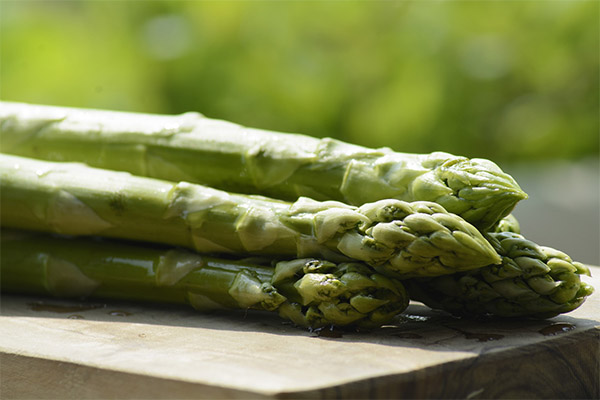
For Diabetes Mellitus.
Asparagus is a product that can help with diabetes. With regular consumption of this vegetable, you can notice a significant reduction in blood sugar levels. The substances in the product stimulate the production of insulin, a hormone that helps to absorb glucose. Asparagus will enrich the diet of the patient, and in case of an aggravation will help to alleviate the symptoms of the disease and accelerate the onset of the remission phase.
Important: The glycemic index of asparagus is 30 units.
For pancreatitis
During exacerbation of pancreatitis it is recommended to exclude asparagus from the diet. The vegetable can have a negative effect on the body. During the period of complete stable remission, patients can treat themselves to asparagus first boiled, then baked, and afterwards in its natural raw form. However, it is necessary to monitor very carefully even the slightest changes in health. If there are no side effects, you can eat asparagus, but the portions should be adjusted individually.
For gastritis
Asparagus contains saponins, which irritate the gastric mucosa. This product is especially dangerous during exacerbations of gastrointestinal diseases. In the remission phase, it is allowed to eat the vegetable, but only after heat treatment, you should not eat it raw. In general, it is recommended to include vegetables in your diet with gastritis, because they have a beneficial effect on the gastrointestinal tract and alleviate the symptoms of the disease.
For constipation
Asparagus is rich in fiber, which facilitates the passage of food through the GI tract and improves digestion. The soft effect of the vegetable on the intestines helps eliminate the tendency to constipation, while not irritating the mucous membranes.
For gout.
Purines - substances that are contained in asparagus in large enough quantities can harm the body by increasing the concentration of uric acid, due to which the symptoms of gout can only worsen. However, it is allowed to consume this product in acceptable quantities. For example, you can drink decoctions and tinctures, which include asparagus.
Asparagus-based folk medicine recipes
For arthritis and rheumatism
- Boil in boiling water (1 l) the crushed root of medicinal asparagus (60 g).
- Cool decoction.
- Take 1 tbsp. 3 times a day.
In problems of the musculoskeletal system.
- Chopped shoots (3 tbsp.) boiled in boiling water (1 cup).
- Take 1-2 tbsp. spoon up to 3 times a day. The course of treatment - up to 4 weeks.
An antipyretic and diuretic
- Pour the powder from asparagus root (15 g) with boiling water (1 cup).
- Put on a water bath. Boil for 30 minutes.
- Strain.
- Take 1 cup up to 3 times a day.
Infusion to enhance potency
- Pour asparagus (7 pieces) with boiling water (250 ml).
- Insist about 9 hours.
- Take 1 tbsp. up to 4 times a day.
Remedy for periodontitis
- Pour warm water (1 tbsp.) asparagus root (100 g), add vinegar (2 tbsp.) and mix.
- Put on the fire (10 minutes).
- Cool the resulting remedy.
- Rinse your mouth several times during the day.
Asparagus in cosmetology
In cosmetology, medicinal asparagus is used as a means to rejuvenate the skin. With the help of this plant, you can effectively maintain the health and youthfulness of the skin.

Asparagus Pigment Mask
- Put shredded asparagus (1 tbsp.) in a bowl, add honey (3 tbsp.), lemon essential oil (3 drops) and mix.
- Wash your face with warm water and cleanse your skin (with a toner).
- Apply the resulting mass on the skin of the face.
- Wait for 30 minutes.
- Rinse off the mask and wash your face with thermal water.
Eye Wrinkle Mask
- Using gauze, squeeze the juice from the crushed asparagus (about 2 tsp.).
- Add base oil to the juice. You can use almond oil, argan oil or olive oil.
- Soak cotton pads in the mixture and place them on covered eyes (so that the mass does not get inside).
- Wait for 30 minutes.
- Wash your face with warm water.
Harms and contraindications
Asparagus has some contraindications and can cause harm to the body. For example, with excessive consumption, flatulence very often occurs. The sulfur contained in it can change the smell of urine and body.
The vegetable is contraindicated in cases of individual intolerance or when allergic to onions and garlic. Experts recommend excluding this product from the diet in cases of GI diseases, gout, rheumatism and kidney disease. You also need to be very careful during pregnancy and lactation.
How to choose and store asparagus
Quality white asparagus should be quite thick, green asparagus can be thin. Thick stalks of the green vegetable will also do. It is important to pay attention to the whitish skins on the stalks. Their presence indicates that the vegetable is already overripe.
Asparagus storage times are short. To keep it as long as possible, it should be pre-treated. It is recommended to remove the roots of the plant, put it in water and place it in the refrigerator. Or you can wrap the asparagus in a damp cloth and put it in a cool, dark place. This will keep the vegetables for a week, but they will lose their flavor with each passing day.
Can I Freeze
Asparagus can be frozen. To do this, before freezing it should be washed, removed damaged parts and sliced. Then put the vegetables in a colander and drop them into a pot with boiling water, cover with a lid. Blanch for about 3 minutes, then place in a colander of water with ice. Take out the asparagus and wait for the water to drain. Transfer the vegetables to an airtight container and close with a lid. After that, send the container to the freezer.
How to eat asparagus correctly
There are quite a few ways to eat asparagus. Asparagus can be eaten hot, cold, raw, cooked, as a main dish, or as a side dish.
How much can I eat per day?
In general, experts do not determine the maximum threshold of consumption of this vegetable, with the optimal portion is considered to be 4-5 pods per day.
Can I eat asparagus at night?
It is allowed to consume asparagus at night. However, there is a possibility that the product may disturb your sleep, because it will make you go to the bathroom frequently.
Can I Eat Raw Asparagus
Asparagus is edible both processed and raw. In its natural form, the product will have the most beneficial effect on the body, because the unprocessed vegetable contains the greatest number of useful substances.
Can I eat asparagus during the Lent?
Asparagus is a vegetable, so it is allowed to eat it during the Lent.
How to peel asparagus correctly
White asparagus should be peeled like this:
- With a vegetable peeler, remove the top layer from the shoots (1 cm away from the bud).
- Peel the stems until they have a juicy middle.
- Cut off 2 cm from the ends of the stems.
- Peel the heads.
Peel green asparagus in a slightly different way:
- With a knife, trim or break off about 2 cm of the coarse part of the pod at the lower end.
- Remove the film from the heads.
How to cook asparagus: Recipes
Asparagus goes well with a variety of dishes. For example, it can be included in soups, salads, casseroles and roasts.

How to cook
There are two techniques for cooking asparagus - classic and traditional.
Classic
- Peel asparagus from the rough parts.
- Tie the sticks in bundles of 10 pieces.
- Boil water (1 liter), add lemon juice (1 tsp), sugar and salt.
- Put asparagus in the pot. When the water boils, cook for another 5-7 minutes.
- When ready, put the sticks in water (ice cold).
Traditional
- Peel the stalks and place in salted boiling water (horizontally).
- Cover with a lid (tightly) and cook for 5-7 minutes. The vegetable can be cut in half if necessary.
- Cook the dense lower part for about 5 minutes, the tender upper part for 2 minutes.
How to Roast
- Peel the asparagus, remove the rough parts.
- Pour oil into a heated frying pan.
- Place the peeled garlic in the pan for 1 minute.
- Place the asparagus in the pan over medium heat. Cook for 7 minutes.
- Salt the vegetables.
How to marinate
- Do not process young, thin asparagus. Cut off the lower parts of the stems from the mature vegetable.
- Peel the stems of the mature vegetable. Place mature asparagus in boiling water (for 2 minutes), cool in ice water and dry. Scald young vegetables with boiling water in a colander and dry.
- Arrange asparagus in tall sterilized jars (so vegetables will fit completely).
- Heat the vinegar over medium heat until warm, but not boiling. Season with salt and add sugar.
- Peel, cut garlic into slices and place in the resulting mixture. In a pot add oil, pepper and dill seeds (you can add Dijon mustard).
- Mix the marinade and pour it over the vegetables. Pour warm water on top.
- Cover the jars and leave in the refrigerator for 6 hours.
Asparagus salad
Ingredients:
- mushrooms - 300 g;
- beans (canned) - 1 cup;
- carrots (Korean) - 300 g;
- asparagus - 100 gr;
- walnuts (walnuts) - 50 g;
- vegetable oil - 3 tbsp.
How to cook:
- Roast mushrooms and onions.
- Wash the beans (you can boil them).
- Mix all the ingredients. Add coarsely chopped nuts.
Asparagus in the oven
Ingredients
- asparagus - 500 gr;
- olive oil - 2 tablespoons;
- Garlic - 2 cloves.
How to cook:
- Wash the asparagus and cut off the rough ends.
- Cover a baking tray with foil and put the vegetables on it.
- Drizzle with oil, stir and sprinkle chopped garlic, salt and pepper (freshly ground black pepper), stir again.
- Send it to the oven heated to 200°C for 10 minutes.
- Put the vegetables on a plate and sprinkle with lemon juice.
Asparagus soup
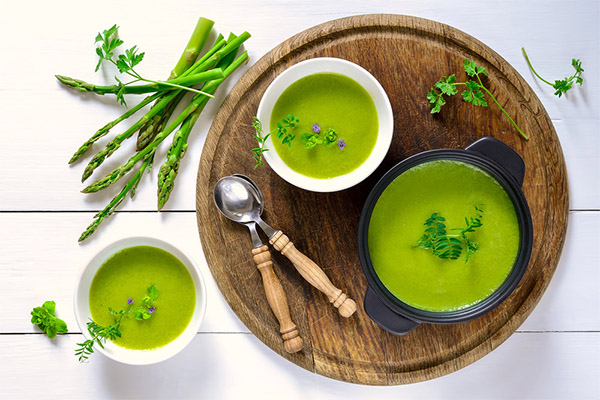
Ingredients
- green asparagus - 500 gr;
- onions - 1 pc;
- potatoes - 2 pcs;
- zucchini - 1/2 pc;
- chicken broth - 1 l;
- olive oil - 1 tbsp.
How to cook:
- Wash and dry the asparagus, cut off the rough parts, remove the skins. Cut it into small pieces. Separate a few buds (the tops with inflorescences) and boil in boiling water for about 3-5 minutes.
- Peel and chop the onions.
- Wash potatoes and zucchini and cut into cubes.
- In a pot (with a thick bottom) pour olive oil, add onion and put on medium heat to fry (3 minutes), stirring it while doing so. Add the zucchini, potatoes and asparagus. Stir-fry the vegetables for about 3 minutes.
- Pour stock into the pot and increase the heat; once it boils, put the lid on and turn down the heat (to medium). Cook for 15-20 minutes.
- The resulting soup in a blender until homogeneous. You can add broth or water.
- Salt and pepper the soup.
- Garnish with slices of asparagus.
Can I give pets asparagus?
Dogs can be fed asparagus, but it is important to give your pet only processed product, not raw. It will be enough to boil the vegetable a little or steam cook it. After the first use of the new product, you need to monitor the reaction of the animal and in case of allergy immediately contact the veterinarian. But a cat should not be given this product. If she accidentally eats asparagus, she should be taken to the veterinarian immediately.
Interesting facts about asparagus
- Peru is the world's leading exporter of asparagus.
- People in Germany eat only white asparagus.
- Asparagus was first cultivated in Greece nearly 2,500 years ago.
- Nefertiti is said to have proclaimed asparagus to be the food of the gods.
«Important: All information on this site is provided for informational purposes only for educational purposes only. Please consult with a health care professional before using any of our recommendations. health care professional before applying any recommendations. Neither the editors nor the authors shall be liable for any possible harm caused by materials."

